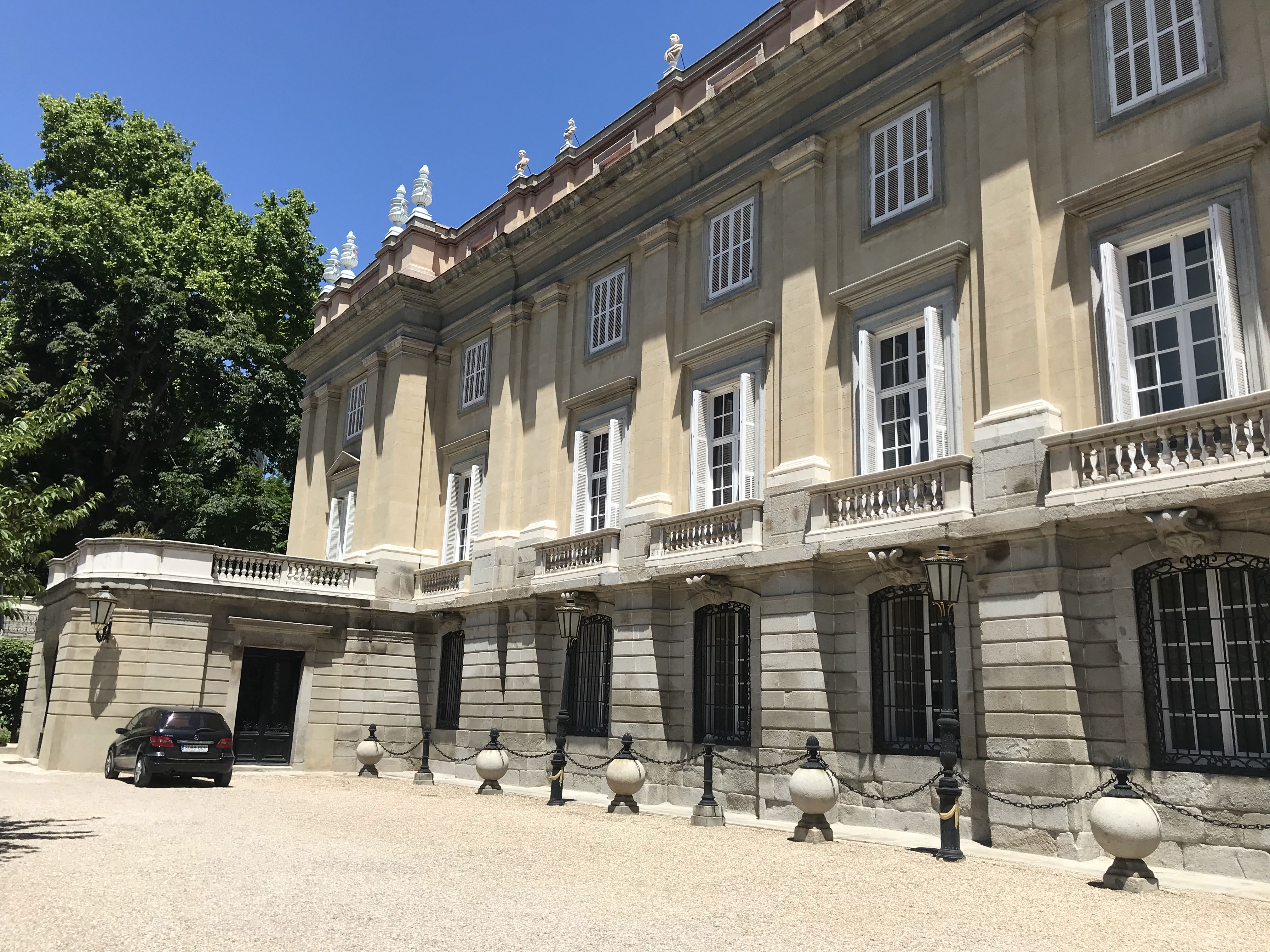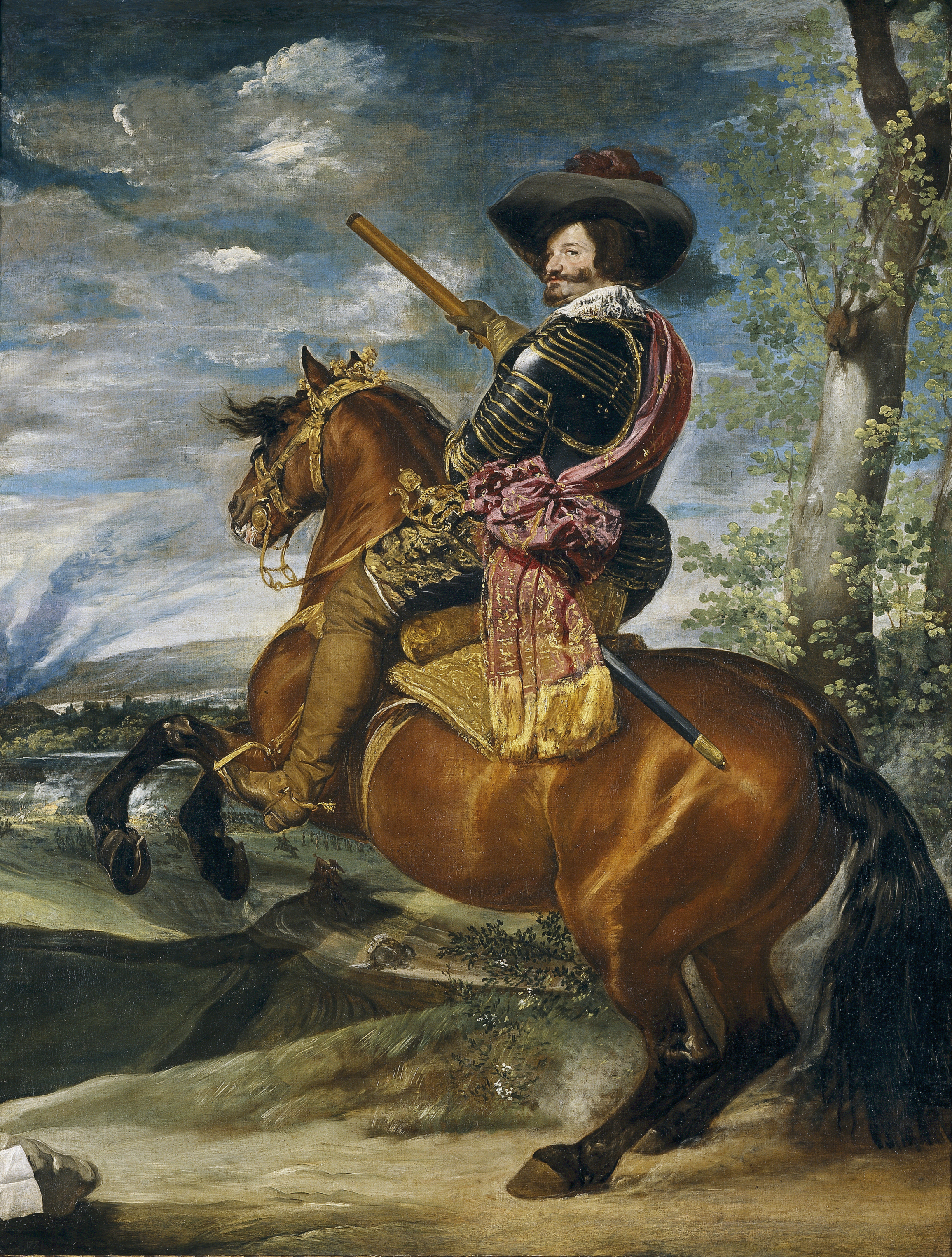|
Count Of Robres
{{Spain-noble-stub ...
The Count of Robres is a Spanish noble title created by King Philip IV of Spain on November 20, 1646, in favor of Bernardo Pons y Turell, Regent of the Chancery in the Supreme Council of Aragon and a knight of the Order of Santiago. The title is named after the town of Robres in the province of Huesca. References Spanish noble titles Robres Robres is a municipality located in the province of Huesca, Aragon, Spain. According to the 2018 census ( INE), the municipality has a population of 531 inhabitants. See also * List of municipalities in Huesca This is a list of the municipaliti ... [...More Info...] [...Related Items...] OR: [Wikipedia] [Google] [Baidu] |
Spanish Noble Title
The Spanish nobility are people who possess a title of nobility confirmed by the Spanish Ministry of the Presidency, Justice and Relations with the Cortes, as well as those individuals appointed to one of Spain's three highest orders of knighthood: the Order of the Golden Fleece, the Order of Charles III and the Order of Isabella the Catholic. Some members of the Spanish nobility possess various titles that may be inherited or not, but the creation and recognition of titles is legally the prerogative of the monarchy of Spain. Many Spanish titles and noble families still exist and many have transmitted their aristocratic status since the Middle Ages. Some aristocratic families in Spain use the nobiliary particle ''de'' before their family name, although this was more prominent before the 20th century. History 16th century The centralization of the Spanish royal court in early modern Europe reshaped Aristocracy, aristocratic power, shifting influence from regional noble dom ... [...More Info...] [...Related Items...] OR: [Wikipedia] [Google] [Baidu] |
King Philip IV Of Spain
Philip IV (, ; 8 April 160517 September 1665), also called the Planet King (Spanish: ''Rey Planeta''), was King of Spain from 1621 to his death and (as Philip III) King of Portugal from 1621 to 1640. Philip is remembered for his patronage of the arts, including such artists as Diego Velázquez, and his rule over Spain during the Thirty Years' War. By the time of his death, the Spanish Empire had reached approximately 12.2 million square kilometres (4.7 million square miles) in area but in other aspects was in decline, a process to which Philip contributed with his inability to achieve successful domestic and military reform. He was succeeded on his death by his young son Charles II as King of Spain and in 1640 (with the collapse of the Iberian Union) by John IV as King of Portugal. Personal life Philip IV was born in the Royal Palace of Valladolid, and was the eldest son of Philip III and his wife, Margaret of Austria. In 1615, at the age of 10, Philip was marr ... [...More Info...] [...Related Items...] OR: [Wikipedia] [Google] [Baidu] |
Royal Academy Of History
The Royal Academy of History (, RAH) is a Spanish institution in Madrid that studies history "ancient and modern, political, civil, ecclesiastical, military, scientific, of letters and arts, that is to say, the different branches of life, of civilisation, and of the culture of the Spanish people". Spanish people in this regard are understood to be citizens of the Kingdom of Spain or the indigenous people of its predecessors, or their descendants. The academy was established by royal decree of Philip V of Spain on 18 April 1738. Its official publication is the '' Boletín de la Real Academia de la Historia''. Building Since 1836 the academy has occupied an 18th-century building designed by the neoclassical architect Juan de Villanueva. The building was originally occupied by the Hieronymites, a religious order. It became available as a result of legislation in the 1830s confiscating monastic properties (the ecclesiastical confiscations of Mendizábal). Collections As formerly t ... [...More Info...] [...Related Items...] OR: [Wikipedia] [Google] [Baidu] |
Regent Of The Chancery
A chancery or chancellery () is a medieval writing office, responsible for the production of official documents.Coredon ''Dictionary of Medieval Terms and Phrases'' p. 66 The title of chancellor, for the head of the office, came to be held by important ministers in a number of states, and remains the title of the heads of government in modern Germany and Austria. Chancery hand is a term for various types of handwriting associated with chanceries. Etymology The word ''chancery'' is from French, from Latin, and ultimately refers to the lattice-work partition that divided a section of a church or court, from which also derives chancel, cancel "cross out with lines", and, more distantly, incarcerate "put behind bars" – see ''chancery'' for details. In England In England's medieval government, this office was one of the two main administrative offices, along with the Exchequer. It began as part of the royal household, but by the 13th-century was separate from the household and ... [...More Info...] [...Related Items...] OR: [Wikipedia] [Google] [Baidu] |
Supreme Council Of Aragon
The Council of Aragon, officially, the Royal and Supreme Council of Aragon (; ; ), was a ruling body and key part of the domestic government of the Spanish Empire in Europe, second only to the monarch himself. It administered the Crown of Aragon, which was composed of the Kingdom of Aragon, Principality of Catalonia (including Roussillon until 1659), Kingdom of Valencia, Kingdom of Majorca and Kingdom of Sardinia. The Aragonese possessions in Southern Italy (Naples and Sicily) were later incorporated into the Council of Italy, together with the Duchy of Milan, in 1556. The Council of Aragon ruled these territories as a part of Spain, and later the Iberian Union. History The Council of Aragon was the result of the composite nature of the Spanish Empire, composed of individual kingdoms ruled by a common king but each retaining their own laws, customs, and government. Ferdinand II, along with his wife Isabella, was the first ruler of both Castile and Aragon. Because Ferdinand II ... [...More Info...] [...Related Items...] OR: [Wikipedia] [Google] [Baidu] |
Order Of Santiago
The Order of Santiago (; ) is a religious and military order founded in the 12th century. It owes its name to the patron saint of Spain, ''Santiago'' ( St. James the Greater). Its initial objective was to protect the pilgrims on the Way of St. James, to defend Christendom and to remove the Muslim Moors from the Iberian Peninsula with the Reconquista. Entrance was not restricted to nobility of Spain exclusively, and some members have been Catholic Europeans from other parts of Europe. The Order's insignia is particularly recognisable and abundant in Western art. With the culmination of the Reconquista and the death of the Grand Master Alonso de Cárdenas, the Catholic Monarchs incorporated the Order into the Spanish Crown, and the Pope Adrian VI forever united the office of Grand Master of Santiago to the Crown in 1523. The First Republic suppressed the Order in 1873, but it was re-established in the Restoration as a nobiliary institute of honorable character. The Orde ... [...More Info...] [...Related Items...] OR: [Wikipedia] [Google] [Baidu] |
Robres
Robres is a municipality located in the province of Huesca, Aragon, Spain. According to the 2018 census ( INE), the municipality has a population of 531 inhabitants. See also * List of municipalities in Huesca This is a list of the municipalities in the province of Huesca, in the autonomous community of Aragon, Spain Spain, or the Kingdom of Spain, is a country in Southern Europe, Southern and Western Europe with territories in North Africa. F ... * Count of Robres References Municipalities in the Province of Huesca {{huesca-geo-stub ... [...More Info...] [...Related Items...] OR: [Wikipedia] [Google] [Baidu] |
Huesca
Huesca (; ) is a city in north-eastern Spain, within the Autonomous communities of Spain, autonomous community of Aragon. It was the capital of the Kingdom of Aragon between 1096 and 1118. It is also the capital of the Spanish Huesca (province), province of the same name and of the Comarcas of Spain, comarca of Hoya de Huesca/Plana de Uesca, Hoya de Huesca. In 2009, it had a population of 52,059, almost a quarter of the total population of the province. The city is one of the smallest provincial capitals in Spain. Huesca celebrates its main festival, the ''Fiestas de San Lorenzo'', in honor of Saint Lawrence, from 9 to 15 August. History Huesca dates from pre-Roman times, and was once known as ''Bolskan'' (Northeastern Iberian script, Iberian: file:Bolskan.svg, 50px) in the ancient Iberian language. It was once the capital of the Vescetani, in the north of Hispania Tarraconensis, on the road from Tarraco (modern Tarragona) and Ilerda (modern Lleida) to Caesaraugusta (modern Zara ... [...More Info...] [...Related Items...] OR: [Wikipedia] [Google] [Baidu] |
Spanish Noble Titles
Spanish might refer to: * Items from or related to Spain: **Spaniards are a nation and ethnic group indigenous to Spain **Spanish language, spoken in Spain and many countries in the Americas **Spanish cuisine ** Spanish history **Spanish culture **Languages of Spain, the various languages in Spain Other places * Spanish, Ontario, Canada * Spanish River (other), the name of several rivers * Spanish Town, Jamaica Other uses * John J. Spanish (1922–2019), American politician * "Spanish" (song), a single by Craig David, 2003 See also * * * Español (other) * Spain (other) * España (other) * Espanola (other) * Hispania, the Roman and Greek name for the Iberian Peninsula * Hispanic, the people, nations, and cultures that have a historical link to Spain * Hispanic (other) * Hispanism * Spain (other) * National and regional identity in Spain * Culture of Spain The culture of Spain is influenced by its Western ... [...More Info...] [...Related Items...] OR: [Wikipedia] [Google] [Baidu] |


